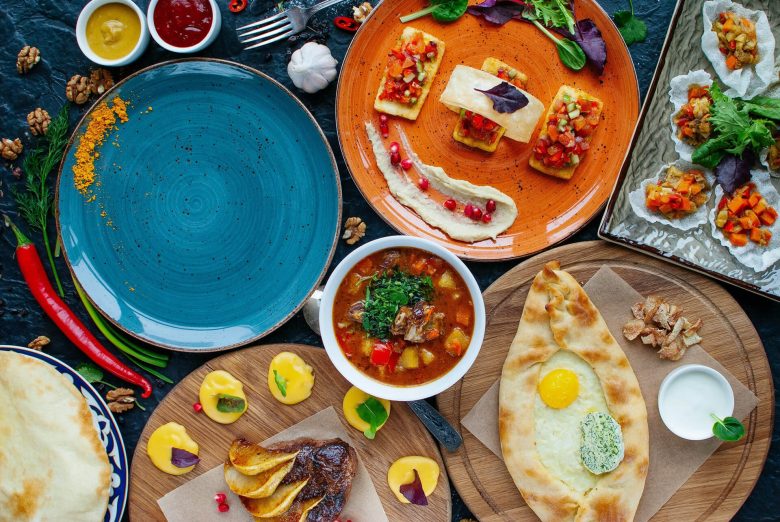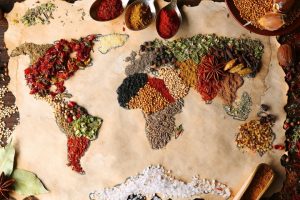Food is more than just something to eat; it’s an important part of culture and society. Learning about the different ways people around the world experience and enjoy their cultural heritage through food can help you better understand these ways. These conventions and practices not only reflect the unique ingredients and cooking styles of each culture, but also how their values, beliefs, and traditions shape their food.
1. The Meaning of Food to Different Cultures
Food customs are deeply tied to national identity and can help people feel a sense of belonging and continuity. Traditional foods are often a way for people to connect with their ancestors and their past. It’s common for families to pass down recipes from generation to generation. This keeps the connection to the past alive. People don’t just eat these foods; they celebrate them as living symbols of their way of life.
In many countries, certain foods are associated with specific festivals, celebrations, and rituals. This helps people feel more connected to their culture. For example, during Día de los Muertos (Day of the Dead) in Mexico, altars are ornate and filled with traditional foods such as bread of the dead, sweetbreads, and sugar skeletons. These foods are meant to honor and celebrate loved ones who have passed away, which shows how important food is to rituals and remembrances in many cultures.
2. Food as a Means of Social Bonding
Food is often a way for people to connect and form groups. Sharing meals is an important part of social life because people can meet, talk, and celebrate. Many countries believe that eating together is a great way to strengthen relationships and social bonds.
For example, the Japanese tea ceremony (chanoyu) is a formal way of serving and drinking tea that emphasizes peace, unity, and respect. The event is a form of meditation that brings people together through a shared love of simplicity and elegance. It shows how food and drink can bring people together across cultural and spiritual boundaries.
3. Rituals and Symbolism of Food Preparation
Ritual meaning and symbolism are often integrated into the making and eating of food. In many cultures, certain foods are prepared and eaten during major events, such as rites of passage, religious ceremonies, or seasonal festivals. Each of these foods has its meaning.
In Hinduism, certain foods are offered to the gods during pujas, a religious event. People who follow a particular religion share these gifts, called prasadam, with each other as a reward. People believe that certain foods, such as sweets and fruits, have spiritual and cultural meaning and choose them because they are pure and happy.
4. Varies by Season and Location
Regional and seasonal differences in food habits and rituals are due to differences in resources, climate, and agricultural cycles. Many countries have developed their culinary traditions due to the availability of seasonal ingredients and the need to store food when it is hard to find.
The Japanese enjoy seasonal foods such as sakura mochi in the spring and chestnut sweets in the fall to commemorate the changing of the seasons. These foods are often eaten during ceremonies and festivals that celebrate the changing of the seasons. This shows how important nature and its cycles are to Japanese culture.
5. Foods and Rituals for Celebrations and Holidays
During celebrations and festivals, people often eat certain foods to make the event more meaningful. These are events where people from different regions can come together to share food and enjoy their shared traditions and values.
In China, during the Lunar New Year, people make foods such as dumplings, fish, and rice cakes to represent wealth, abundance, and good fortune. Sharing these foods is a way to express hope for the coming year, as each dish has its meaning.
January 6 is the Italian holiday of La Befana, where traditional sweets such as panettone and torrone are eaten. The festival marks the end of Christmas and combines food customs with folklore and community gatherings. It shows how food can be used to mark cultural events and bring people together.
6. The Influence of Globalization on Traditional Food Practices
Globalization has brought different foods and cooking styles into contact with each other. This has resulted in exchanges and changes in culinary traditions. This has improved global nutrition but has also made people question how traditional eating habits are maintained and the impact of mixed cultures.
Mixing different types of food creates new eating experiences and shows how the world is becoming more connected. For example, sushi is Japanese cuisine but has been adopted and loved in many other countries. This has resulted in the creation of fusion dishes that use local flavors and ingredients. This cultural exchange can be seen as a good thing, but it also makes people talk about the importance of keeping traditional practices alive and ensuring they don’t get lost in the mix of global influences.
Conclusion
Understanding the different ways in which people around the world experience and enjoy cultural heritage through food provides us with a lot of useful information. Food is a powerful way to demonstrate cultural identity, social connections, and ritual meaning. It can show you the beliefs, values, and behaviors of different groups of people. As we learn and appreciate these practices, we deepen our understanding of the rich culinary traditions of the world and how food brings people together.
FAQs
1. How does how people eat reflect their cultures?
Eating habits reflect cultural characteristics through the use of local ingredients, cooking methods, and traditional dishes that are unique to a specific region or group. These practices reveal the past, present, and social rules of a culture. They are often passed down from generation to generation and maintain close ties to cultural traditions.
2. How does food help people from different countries understand each other?
Food is an important part of social bonding because it brings people together to eat and celebrate. Family meals and holiday gatherings are examples of communal eating practices that encourage social interaction, improve relationships, and strengthen community ties. Food is often a way for people to express kindness and connect.
3. How do seasonal and regional changes affect people’s eating patterns?
Seasonal and regional changes affect the way people eat through the food available and the way food is prepared. In Scandinavian countries, for example, classic Christmas dishes like pickled herring originate from the way people preserved food for the winter. In contrast, Japanese cuisine uses seasonal ingredients like cherry blossoms in spring to show how food relates to the changing seasons.
4. How has globalization changed the way people ate in the past?
Through cross-cultural contact, globalization has created new cuisines and changed people’s traditional ways of eating. This has improved food around the world but has also led to concerns about maintaining the old ways of doing things. Fusion dishes and global food trends can overshadow or change traditional recipes. Therefore, people work to preserve their culinary traditions.
5. What steps are we taking to keep indigenous cuisine alive?
To keep traditional eating habits alive, recipes are written, culinary heritage projects are launched, and cultural festivals are held. Food tours, community projects, and training programs are other ways to celebrate and keep traditional foods alive.




